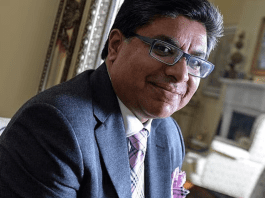In a sudden and bold move, Ontario made headlines after collecting around $260,000 from a one-day electricity surcharge on power exported to the United States.
Ontario’s Surprise Surcharge Sparks Big Impact
This happened on March 10, when Premier Doug Ford introduced a 25% surcharge on electricity that Ontario sends across the border.
The reason behind this decision was a trade dispute between Canada and the United States. U.S. President Donald Trump had placed tariffs on Canadian steel and aluminum. In response, Ontario decided to take action by charging more for the electricity it sells to American states.
On that day, Ontario’s Independent Electricity System Operator (IESO) sent about 26,000 megawatt hours of electricity to the U.S. This is enough to power around 1.5 million homes in three American states. With the 25% surcharge in place, the province collected approximately $260,000 in just one day.
JAS-39 Gripen Rejected? U.S. May Force Canada Into F-35 Deal with No Way Out
The Ford government said this was a temporary move aimed at sending a strong message to the U.S. administration. Energy Minister Stephen Lecce explained that the goal was to protect Ontario’s workers, families, and local businesses from what they saw as unfair treatment by the United States.
Trump Reacts Strongly, But U.S. Tariff Hike is halted
The electricity surcharge didn’t go unnoticed in Washington. President Trump responded quickly, threatening to double the U.S. tariffs on Canadian steel and aluminum. Originally set at 25%, Trump proposed raising the tariffs to 50% in reaction to Ontario’s new electricity charge.
This sharp reaction created a tense moment in the trade relationship between the two countries. However, things began to calm down after a key invitation was sent from the U.S. side. Premier Ford and many federal Canadian ministers were invited to Washington, D.C., for discussions by U.S. Commerce Secretary Howard Lutnick.
China’s Veiled Warning to US; WZ-9 Drone Could Detect F-35 and B-21
The U.S. would maintain the first 25% tax on Canadian steel and aluminum, it was announced after the Washington conference. As part of the talks, Ontario agreed to suspend the electricity surcharge. So, while the charge was only in place for one day, it created a ripple effect in international trade talks.
According to Lecce’s office, the quick action taken by Ontario helped show the U.S. that the province was serious about standing up for its interests. Lecce called it a “swift action” taken to defend Canadian jobs and families, and said that the surcharge was a message that Ontario wouldn’t be pushed around.
Where Will the Money Go? Province Stays Quiet
When the Ontario government first announced the electricity surcharge, it said any money collected would be used to support workers, families, and businesses affected by the U.S. tariffs. But now that the one-day surcharge has brought in $260,000, the public is wondering exactly where that money will be spent.
In a World-First, U.S. Air Force Turns Two Damaged F-35s into Cutting-Edge ‘Frankenjet’ Combat Plane
So far, the government hasn’t given any details. Lecce’s office declined to say what specific programs or areas would benefit from the collected funds. The only statement provided was a repeat of the original promise — that the money would go toward helping Ontario residents deal with the effects of American tariffs.
The government had previously estimated that the surcharge would bring in between $300,000 to $400,000 if it remained in effect daily. Since it was only active for one day, the final figure came out to around $260,000.
Even though it was a short-lived policy, the one-day electricity surcharge created a big wave. It led to a strong reaction from the White House, a high-level meeting in Washington, and finally a decision to pause the policy after just 24 hours.
Ontario’s move to introduce a surcharge on electricity exports was meant to be a symbol of resistance against what it called “unjustified tariffs.” Whether or not it changed the bigger picture of trade between Canada and the United States, the one-day charge left a clear financial footprint — and a political one too.







